
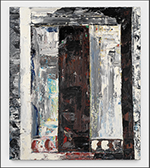
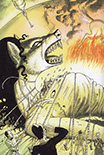
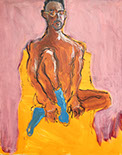

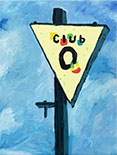

John Raymond Henry: A Steel Driving Man
by Neil Goodman
Well every Monday morning
When the bluebirds begin to sing
You can hear John Henry a mile or more
You can hear John Henry’s hammer ring, Lord, Lord,
You can hear John Henry’s hammer ring
John Henry was a steel-driven man. Known for monumental works throughout the world, he passed away in Chattanooga, Tennessee, on November 1 at the age of 79.
Although I did not know him well, I mostly knew of him. In the sculpture world of the 1980s, he was a giant. Along with Mark di Suvero, Lyman Kipp, Kenneth Snelson, and Charles Ginnever, he helped form ConStruct Gallery, based in Chicago. Though ConStruct’s time span was limited, its impact was not, as they were instrumental in placing and promoting nonrepresentational sculpture in a multitude of venues throughout the country at a time prior to the proliferation of public works.
John Henry was known for assembled and joined-steel rectangular forms that were welded and bolted to create massive, towering works. His sculptures are a composite of repeated forms, with a careful orchestration of weights and balances resolved with a certain harmonic sensibility. In many ways they are the perfect asymmetrical antidote to the post-Miesian hard-edged architecture that personifies much of our modern urban landscape. If the architecture was staid and orderly, John Henry’s sculptures were vibrant, gestural, and explosive.
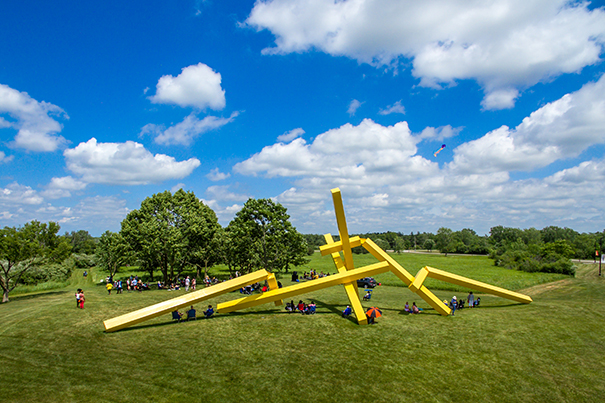
John Henry, Illinois Landscape #5, 1976. Yellow painted steel, 36’H x 134’L x 26’D. Nathan Manilow Sculpture Garden Governor’s State University Park Forest South, Illinois.
One sculpture seems to stand out for me in his oeuvre in both placement and scale. Titled Illinois Landscape #5 (1976), it is the monumental capstone for the Nathan Manilow Sculpture Park at Governors State University. Nestled on a berm, the work both spans and embraces the planar Midwestern prairie and harkens to a time when sculpture was defined by a kind of John Ford heroic muscularity—powerful, direct, and uncompromising. It is a sculpture that I have returned to over the years, and it is a quintessential example of a perfect synthesis of form, color, scale, and site.
With a long and distinguished career, numerous accolades and awards, and an extensive list of exhibitions and public commissions, John Henry was a man of his times. If his work seems obvious and perhaps overly familiar, look at his work with a fresh eye, and you will see a sculptor with an extraordinarily clear and directed brilliance—a singular vision uniquely his own. His influence is large, and, though it has been passed on to so many others who have followed in his footsteps, he is still the one and only John Henry. I am grateful for the many doors he opened, for the work he left behind, and for the world to have had heard “John Henry’s hammer ring.”
Neil Goodman is a sculptor formerly based in Chicago with an extensive exhibition history. Presently living in the central coast of California, he retired from Indiana University Northwest as Professor Emeritus of Fine Arts. He is currently represented by Carl Hammer Gallery as well as serving as the South Central California Region Editor for the New Art Examiner.
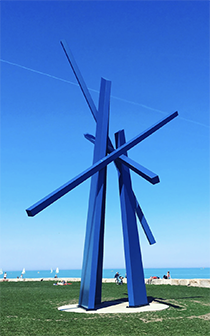
John Henry, Chevron, 2016. Blue painted steel. Source: Etsy.com
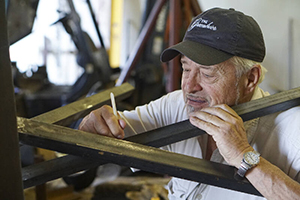
John Henry at work. timesfreepress.com/news.